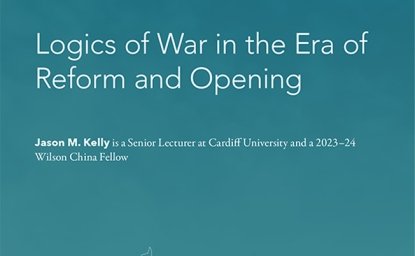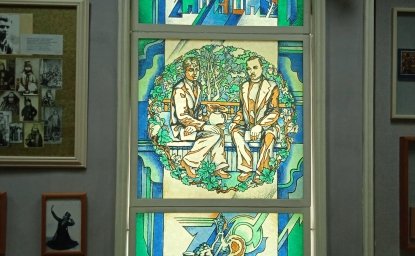274. One Hypothesis on the Different Outcomes of Soviet and Yugoslav State Collapse

In 1991, the Soviet Union and Yugoslavia—two multinational Communist federal states with comparable histories of indigenous revolutions and similar nationality policies—disintegrated. As the only two countries that fully implemented the system of ethno-territorial federalism, the Soviet Union and Yugoslavia shared important structural features. In both cases, the basic political-administrative units—the republics—were organized along ethnic lines and were seen as the quasi-national homelands of the titular nations. Each republic had its own communist party, government structures, cultural institutions (such as academies of science and writers' unions) and residents were encouraged to maintain local languages. The republics were also the main units of economic central planning, which analyzed the level of economic development of each republic and redistributed resources accordingly. This redistribution policy—carried out in the name of the ‘friendship of peoples' (Soviet Union) and the ‘brotherhood and unity' (Yugoslavia)—gave an aggravating economic dimension to inter-republican ethnic relations. Paradoxically, the concessions made to the self-determination of peoples in an attempt to coopt the ‘nationalism of the oppressed' for the cause of the revolution led to the institutional promotion of ethnic particularism. In this fashion, Communist policies that were explicitly designed to counteract centrifugal trends unintentionally reinforced ethnic divisions, and ultimately led to a proliferation of demands for national sovereignty, bringing down both states.
While the structural similarities between Soviet and Yugoslav nationality policy help explain the virtually simultaneous breakdown of the two states, they do not address the question of why the Soviet break-up was relatively peaceful while Yugoslavia disintegrated in violence. A large part of the answer lies in the different perspectives of the ‘core' nations of these two federal states—the Russians and the Serbs—toward the prospect of state collapse. In Russia, the democratic movement led by Boris Yeltsin triumphed over the coalition of ‘empire-savers.' As the empire fell, so too did its coercive state institutions, conservative party structures, and the military-industrial complex. It is no surprise that the USSR broke up along the cleavages inherent in the Soviet nationality policy and that Russia accepted the administrative borders of former Soviet republics as the borders of internationally recognized states. By contrast, the statist-nationalist coalition led by Slobodan Milosevic in Serbia succeeded in mobilizing the grievances of Serbian minorities in Croatia and Bosnia, and rallying officers of the Yugoslav army for the cause of Yugoslav state preservation or, alternatively, for the creation of a Greater Serbia.
How can these different outcomes be explained? The existing literature focuses on economic, institutional or leadership factors. Economic explanations argue that there were incentives for Russia to abandon the Soviet republics, since it played such a disproportionate role in subsidizing the periphery (witness the recurrence of the theme of Russia's exploitation by the ‘imperial center' in the speeches of Boris Yeltsin). By contrast, Serbia stood to lose economically by Yugoslavia's disintegration.
Institutionalists argue that, unlike Serbia in the Yugoslav federation, Russia did not have control over its government structures within the USSR and had to acquire control through a political struggle with the Soviet center. Faced with the mobilization of the periphery and having to establish their own power base independent of the Soviet leadership, Russian democrats joined the ‘parade of sovereignties' for the sake of their own power and in the name of Russia's independence. In Yugoslavia, the goal was not to separate from an oppressive center—if anything the Yugoslav center barely existed by the 1980s—but rather to rebuild it.
Lastly, some argue that leadership played an important role in determining the outcome. Yeltsin wished to unseat Mikhail Gorbachev and found a way to achieve that goal by eliminating the Soviet presidency altogether. MiloŠevic, by contrast, stood to gain much by appealing to the still strong Yugoslav sentiments of many Serbs while simultaneously playing on the dissatisfaction of others with the way in which state decentralization had divided Serbs in Serbia from their co-ethnics in the other republics (Croatia, Bosnia) and autonomous provinces (Kosovo, Vojvodina).
There is no doubt that all these factors play an important role in explaining the different political outcomes in Russia and Serbia. Without questioning the importance of such contextual factors, however, I wish to suggest an alternative approach, one that stresses the autonomous importance of political culture. What do I mean? Most simply put, in my view the most striking difference between the Russian and Serbian political realities in the late 1980s lies in the very different character of Russian and Serbian collective grievances, their symbolic manifestations and their potential political consequences.
Two images can serve to bring the point home. The first is that of Slobodan Milosevic appearing on a field in Kosovo on June 29, 1989, to commemorate the 600th anniversary of the Kosovo battle in front of hundreds of thousands of Serbs, promising to restore their lost national unity and leading them to triumph in ‘new battles,' whether unarmed or armed. The second image is of crowds of people in Moscow spontaneously descending in front of the KGB headquarters and tearing down the statue of the first head of Cheka, Felix Dzerzhinsky, in August 1991. What do these contrasting images tell us? In my opinion, they tell us that, despite the overall structural similarities in the positions of Russians and Serbs in the Soviet Union and Yugoslavia respectively, there were very important differences between the two nations' collective perceptions of ‘what really mattered' in the period of communism's terminal crisis.
By the mid-1980s many Serbs became convinced that communist Yugoslavia was built on the motto ‘weak Serbia—strong Yugoslavia.' This was ‘unjust' for two reasons. First, instead of strengthening the Yugoslav state, this policy had weakened it by promoting nation-building within all nationalities except the Serbs, and ignored the fact that the Serbs had sacrificed the most for the creation of the common Yugoslav state in two world wars. Second, this policy was unjust because it had led to the fragmentation of the Serbian cultural space, subjecting Serbs to assimilation (Croatia), persecution (Kosovo), and potential minority status (Bosnia). How does political culture play into this? My hypothesis is that the Serbs' very strong reaction to the prospect of Yugoslav disintegration had to do with the following political-cultural factors: 1) the Serbs' strong historical identification with Yugoslavia as their (but not only their) national state; 2) the collective memory of victimization in the Independent State of Croatia (which included Bosnia) during World War II; and 3) the reactivation of the Kosovo myth in the context of the Kosovo crisis of the 1980s. This myth codified the historical experience of the Serbs' victimization at the hands of empires, and elevated the myth of heroic collective self-sacrifice for the fatherland to the status of a deeply ingrained national ideal. This ideal had been revived during World War II, when Serbs participated en masse in the Partisan movement. Milosevic, therefore, had plenty of symbolic pillars on which to base his statist-nationalist mobilization effort.
The symbolic reality was very different in the Russian case. In the first place, there was a very long anti-statist tradition in Russia dating back at least to the middle of the nineteenth century. This tradition was reflected in the perception of the imperial state as an alien force in national life. This image of "dual Russia," which pitted the official Russia of the state against the Russia of the people (Robert Tucker), was shared by the Slavophiles, populists, Marxists and even liberals. By eliminating the ‘alien autocracy' and creating a Russia for the ‘workers and peasants,' the Russian revolution promised to put an end to this ingrained collective perception. However, when Stalin began waging his merciless war on the peasantry (the traditional symbol of the Russian people or narod), elevating state interests above all others, and symbolically restoring the autocratic past, he once more resurrected the old image of "dual Russia." Moreover, Stalin gave a powerful foundation to that image by creating a new kind of national memory for many Russians in the form of the Gulag experience. When Russia's leading ‘empire-savers' in the 1980s began playing the card of Soviet-Russian patriotism and state preservation, and attempted to mobilize Russians on the basis of ethnic prejudice (anti-Semitism), they faced a virtually insurmountable obstacle in the form of the widely-shared collective memory of persecution at the hands of the totalitarian state. Not surprisingly, the theme of the oppressive state recurs with uncanny regularity in Yeltsin's speeches. Perhaps his most striking appeal was made to the soldiers sent to crush the Lithuanian independence movement in January 1991. Yeltsin presented the soldiers with a choice between "freedom" and "lies." He evoked a striking image: "Do you think that smashing unarmed people with rifle butts makes you a Rambo, a hero on the side of law and order? No! Again, you're a pawn in their dirty game; a grain of sand in the sand castle of our Empire…"
Serbs might have been manipulated into war by their leadership with the help of state propaganda disseminated through the mass media. But it would be naïve to think that this was the only reason they took up arms. Unlike their Russian counterparts, they did not feel like "grains of sand" but as citizens who were losing a Yugoslav state for which many of their ancestors had laid down their lives. In these very different historically rooted collective perceptions of the state lies an important clue to the diverging paths of Soviet and Yugoslav disintegration.
Author
Associate Professor, Department of Sociology, Oberlin College, OH

Global Europe Program
The Global Europe Program is focused on Europe’s capabilities, and how it engages on critical global issues. We investigate European approaches to critical global issues. We examine Europe’s relations with Russia and Eurasia, China and the Indo-Pacific, the Middle East and Africa. Our initiatives include “Ukraine in Europe”—an examination of what it will take to make Ukraine’s European future a reality. But we also examine the role of NATO, the European Union and the OSCE, Europe’s energy security, transatlantic trade disputes, and challenges to democracy. The Global Europe Program’s staff, scholars-in-residence, and Global Fellows participate in seminars, policy study groups, and international conferences to provide analytical recommendations to policy makers and the media. Read more

Explore More
Browse Insights & Analysis
Logics of War in the Era of Reform and Opening


